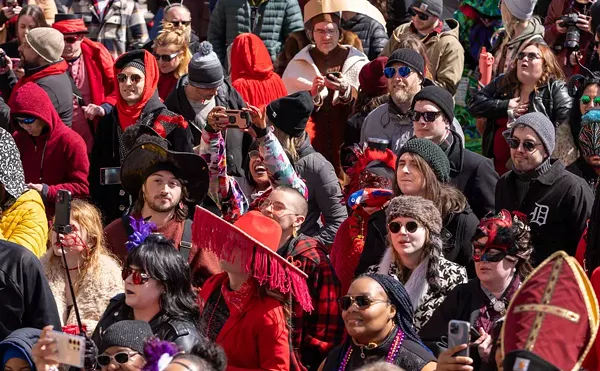At 110 years old, Henry the Hatter is one of Detroit’s oldest continuously operated businesses.
Its founder, Henry Komorofsky, was already a boxing commissioner and Detroit school board member when he opened Henry the Hatter in its original location on Gratiot in 1893. The shop focused on repairing silk and top hats. Unsure of his prospects, Komorofsky kept his job as a drummer, just in case.
The gamble paid off, however, and Komorofsky’s enterprise prospered until his death in 1941. Friend Gus Newman took over, and seven years later agreed with the founder’s widow to sell the business to Seymour Wasserman. After another move across the street, Wasserman settled at 1307 Broadway in 1952, and has been there ever since. His son Paul joined the business in the early 1970s.
Along the way, Wasserman and son branched out with stores in Hamtramck and Southfield; the first was taken over from Leo Mroz, who felt his hat store, Jos. Polczynski Co., would only be safe in the hands of the Wasserman family. Both locations are in business today.
Sy, as he was known to friends and customers, worked right up until his death in 1998, wearing a shirt and tie every day. After his death, his son Paul became the head hatter.
The Detroit store cleaned an astonishing 40,000 hats during the late ’50s and early ’60s. Seventy percent of the hats sold then were made upstairs at the Broadway location.
“In the old days, every department store had an area devoted to hats, which was usually 7,000 or more square feet,” Wasserman explains.
However, most retailers couldn’t survive the boom of the suburbs and the fading of hats as a fashion necessity. Paul Wasserman says soldiers returned from World War II determined to keep their heads uncovered. Sleeker, low-slung automobile designs didn’t help either.
He believes Henry the Hatter survived because of his father’s dedication to his vision and his service to and popularity with customers.
A tour of the floors above the retail shop is like walking through a museum of hat history. A manually operated elevator grants entrée. Wasserman points to hats nearly 40 years old and machines twice that age. There are antique stained-glass windows.
As everything collects dust, one could only imagine and reflect on the style Detroiters sported so long ago. The image of the “Dapper Dan” strolling Washington Boulevard when it was considered on a par with Madison Avenue comes to mind. Sy Wasserman sold him his hat.
Today, celebrities, especially musicians, define what is popular. From LL Cool J and Run DMC to Kid Rock or Jack White (the latter two are both Henry the Hatter customers), performers will wear a hat on national television one day, and Wasserman will be flooded with calls the next, asking if that particular style is available.
“It’s all music driven,” says Wasserman, “and the future is the youth market.”
Henry the Hatter has also gone Hollywood, making appearances in 1998’s Out of Sight, and last year’s 8 Mile, both filmed predominantly in Detroit.
Detroiters are loyal to Wasserman and his stores. Mayors past and present, sporting legends young and old, and locals prominent and unknown are all devoted clients.
“Customers are the designers. I try and respond to their requests,” he says.
Wasserman is often asked about the viability of the Broadway location.
“If I wasn’t here now, I would have never thought of opening here,” he says.
However, he sees a rebirth developing north of the waterfront. He likes the turn the neighborhood is taking. It doesn’t hurt to have the new Compuware headquarters around the corner.
His inventory — from fedora to stingy brim, baseball cap to newsboy hat, Borsalino to Biltmore, Kangol to Stetson, straw or leather, felt or wool — seems endless.
And Wasserman embraces any challenge. He can satisfy the most eccentric hat fetishist — even you. After all, his business has been on top of things since 1893.
David Valk is a Metro Times editorial intern. E-mail [email protected]





